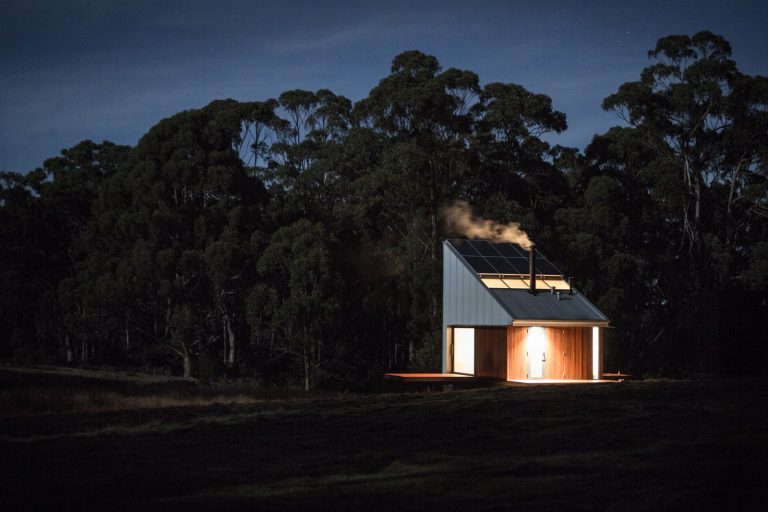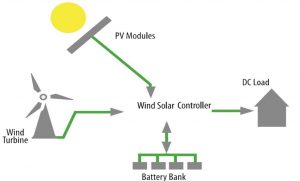Solar started as an off-grid industry. But as grid-tied solar grew, most battery-based systems expertise was lost. However, with increased interest in off-grid solar and battery backup for grid-tied applications, adding these services to your business may be a smart move. We spoke with Sequoya Cross, CEO of supplier —one of the original off-grid experts in the market—to find out more about why and how grid-tied contractors should expand their off-grid services.
Sequoya Cross is the CEO of Backwoods Solar.
Sequoya Cross: Backwoods’ roots go pretty deep. We were founded about 37 years ago in far North Idaho. The original owner and his wife found that when they moved to the area, running power-lines to their off-grid home was incredibly expensive. They instead decided to install an off-grid solar system. After their neighbors started to express interest, the couple set out to educate the local community on off-grid power and Backwoods Solar was born.
All our sales people live with the equipment we sell—most with off-grid, battery based systems—so they are able to offer unique and personalized insight into living off-grid. We traditionally work with homeowners interested in installing their own off-grid systems, but we’ve grown to also help solar installers offering battery-based systems for their own customers. Our work extends to state and federal agencies, international governments, non-profits and emerging markets all over world.
KZ: Tell us more about the opportunity you see in the off-grid market, and why contractors who strictly do grid-tied should consider getting involved?
SC: Off-grid solar is growing incredibly fast in emerging markets in other countries; however, I don’t know that strictly servicing the off-grid market in the U.S. makes a lot of sense. But, learning battery system design is paramount. There are changes coming from states considering mandating battery storage for grid-tied systems—it’s a hot topic of discussion at conferences. Understanding how to properly design, install and maintain these systems is a smart business move for installers, because it’s going to put them one step ahead of companies that haven’t even considered battery storage.
KZ: From an installation stand-point, how does installing off-grid and battery backup projects compare to traditional grid-tied projects? Are they more complicated?
SC: Installing for off-grid and battery backup can be more complicated because these projects have three to four times more components to understand and program, as well as more aspects to consider. Many contractors who come to us can easily design grid-tied systems, but they feel a little daunted as they start their first battery-based system.
One of the major differences in designing for off-grid verses grid-tied is that you don’t have a historical guideline, such as a power bill, to start designing from. Grid-tied applications use historical averages for sun hours and temperature based on location. Battery-based systems use calculations based on worse-case scenarios for sun hours within that same location—meaning you have to design around the shortest day of the year. You also have to look at all the loads in the home or business and customize the system around that home’s specific usage. Off-grid is definitely not an “install it and forget it” proposition. Customers living with a system really have to understand how to maintain it themselves, because if something goes wrong in the middle of the night or a component fails, they’re without power.
KZ: What are some common installation mistakes in off-grid and battery-backup installations?
SC: We’ve worked with quite a few installers who have done hundreds of grid-tied systems but never any battery-based systems before. Sometimes they give us a call after they’d started down the path of trying to design one. Often, they forget to design for winter hours, the shortest day of the year. Another common mistake is sizing the battery too small for the required loads, so the system is in a constant state of discharge, or designing the solar array too small to keep the batteries properly charged even in times of low solar resource
We also see a lot of people creating kits for off-grid installations based off a particular kind of home. Those work great for grid-tied installations, but every house has unique demands in an off-grid system. We believe every system should be custom-designed to be confident it is going to work for each family or business.
KZ: What advice or guidance can you give contractors interested in entering the off-grid or battery-based market?
SC: If you are interested in providing these systems, it’s best to go back to the basics. We are seeing so much growth in storage systems with many new entrants to the market, but some of their technology really hasn’t been deciphered—we are finding failures. Look for manufacturers and suppliers that have been in the business for many years that really understand batteries and what components work well with them: OutBack Power, Magnum Energy, Morningstar, Midnite Solar, long-time distributors and, of course, Backwoods Solar are great examples.
We currently offer a learning center on our website with articles and design tips for homeowners and contractors. We also offer free technological help, design and lifetime support for every system that we sell. It may also be a good idea to have classroom training, or if you’re seeking a certification or NABCEP credit, Solar Energy International also offers battery-based online training programs. Our staff participates in these training programs as well to stay up to speed with new developments in the market.




